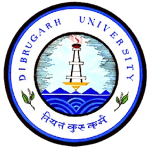
Pragjyotish Centre for Cultural Research (PCCR), Guwahati, Assam
Department of Anthropology, Dibrugarh University, Dibrugarh, Assam
Phanindra Talukdar
Secretary,
Pragjyotish Centre for Cultural Research (PCCR)
Geetanjali Devi
Assistant Professor,
Department of Anthropology, Dibrugarh University, Dibrugarh, Assam
Research Assistant:
Monimugdha Bhuyan
Research Assistant,
Department of Anthropology, Dibrugarh University, Dibrugarh, Assam
Prof. Chandan Kumar Sharma
Dean, School of Humanities and Social Sciences
Tezpur University, Tezpur, Assam, India
Nathan Badenoch
Associate Professor,
Other Global and Interdisciplinary Studies,
Villanova University, Philadelphia, USA
J. A. H. Khatri
Assistant Professor,
Navrachana University, Vadodara, Gujarat
Khamsy Tonpraserth
Assistant Professor,
National University, Laos
Phone Phengpanya
Assistant Professor,
Souphanouvong University, Laos
Satoru Kobayashi
Professor
Kyoto University, Japan
Sommor Panyavong
Assistant Professor,
National University, Laos
Wenner-Gren Foundation, New York, USA
Studies such as Rappaport’s treatise on ritual meaning and ecology (1979) as well E. Valentine Daniel’s description of ritual relationships in southern India (1987) applied the analytic of Peirceian semiotics to the study of ritual. Subsequent research combined the semiotic approach with the study of ideology and performance to provide a nuanced account of processes of “ritualization” in which rituals were both seen as a unique feature of society that at the same time mediated claims to truth, agency, and authority in more quotidian domains of communicative activity (Kuipers 1990, Robbins 2001, Keane 2007, Stasch 2011). Yet if we take the “speech community” as essentially the “organization of linguistic diversity” (Irvine 2006) then we may also ask how ritual processes intersect with linguistic diversity, and to extend the question further, semiotic diversity more broadly? Much of the ethnographic work done so far has focused on specific speech communities without attending to the organization of these communities’ internal diversity. However, in highly multilingual societies, such as those of South and Southeast Asia, speakers in a complex linguistic ecology are constantly interacting, mutually influencing not only everyday communication but also ritual practice. As shown by Jackson (2003), interethnic contact can play a central role in the exchange of cultural material in ritual life, while McDowell (1983) demonstrates how ritual language may be constituted as a cross-lingual semiotic framing.
Our workshop and conference then aim to ask the following questions:
We seek to address these questions with specific case studies from South and Southeast Asia specifically. The format of the workshop and conference will be an introduction to the topic, keynote addresses, and panel discussions with international guests from Laos, Japan and India participants over 2 days.
**International Conference papers will be published in Journal and Book with ISBN, based on quality, relevance and originality.
Full – Length Paper should be submitted through email to pccrconference@gmail.com before the deadline.
Department of Anthropology, Dibrugarh University, Dibrugarh, Assam

